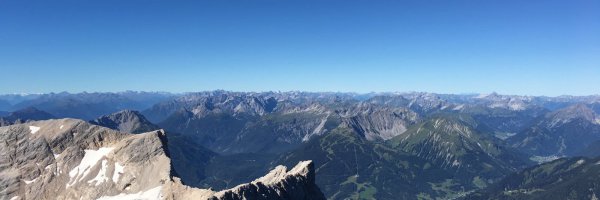Adventure changes the way you see the world. Fearghal O’Nuallain decided to walk across Rwanda to see if adventuring is a good way to learn about development. Here’s what he discovered on his trek through this remarkable country.
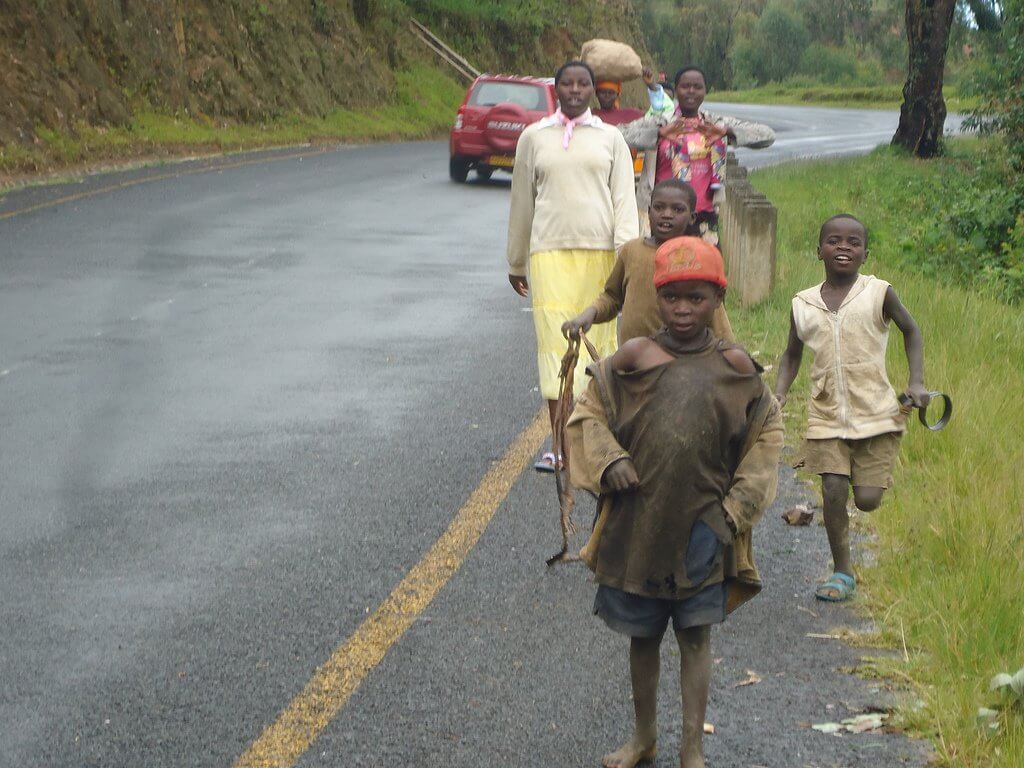
Why walk Rwanda?
Rwanda’s an interesting place. It’s a biodiversity hotspot renowned for the world’s last few healthy troupes of mountain gorilla. Rwanda’s economy is developing at a rapid clip and is widely held as an example of Africa’s potential for political and economic development. Seventeen years ago things were very different; Rwanda was the scene of possibly the most horrific genocide of the 20th century when 800,000 Tutsis, Twa and moderate Hutus were killed in 10 weeks by the Interhamwe militia of the Hutu majority.
I was there because I had decided to walk across Rwanda to see if adventuring is a good way to learn about development for my MSc thesis in Environment and Development at Trinity College. Adventure changes the way you see the world and I wanted to see if I could put that perspective to good use.
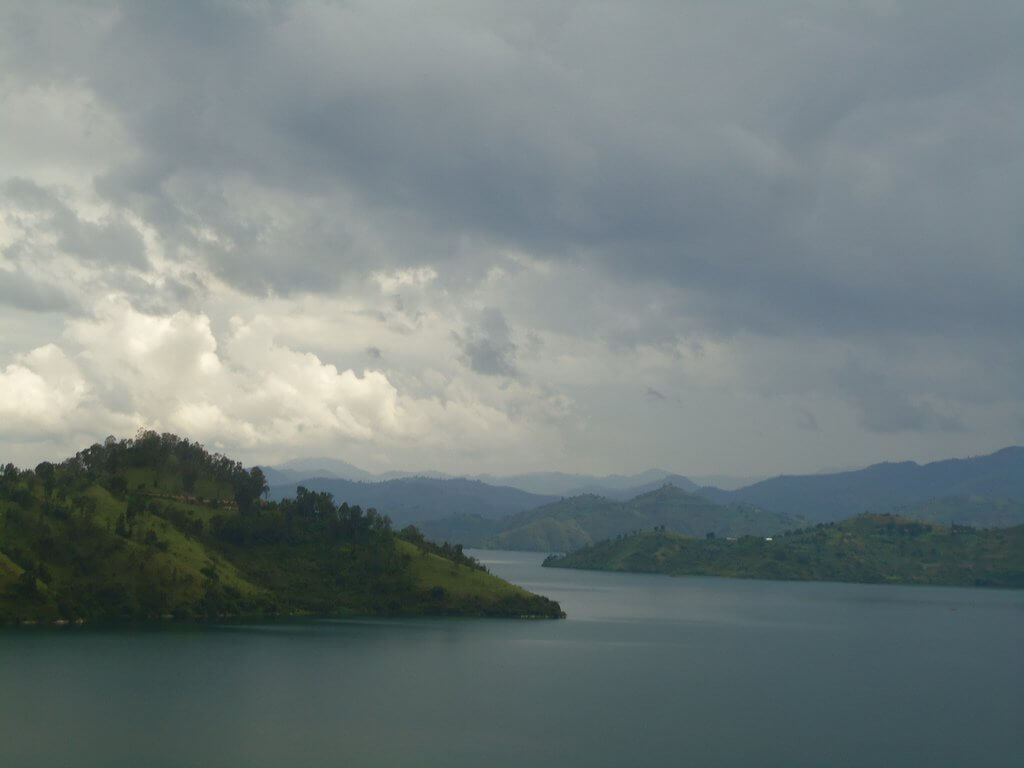
Setting out
At noon on a Sunday, I wash my hands in the turquoise waters of Lake Kivu, turn my back on the Congo and start walking east across Rwanda to Tanzania. The sun is high and strong but the air is thin at 1,500m and the temperature at midday just south of the Equator is not much hotter than a summer’s day in Stephen’s Green. Ahead of me stretches 220km – 220km of asphalt road and red dust tracks, across the thousand hills and open plains of Africa’s western Albertine Rift valley.
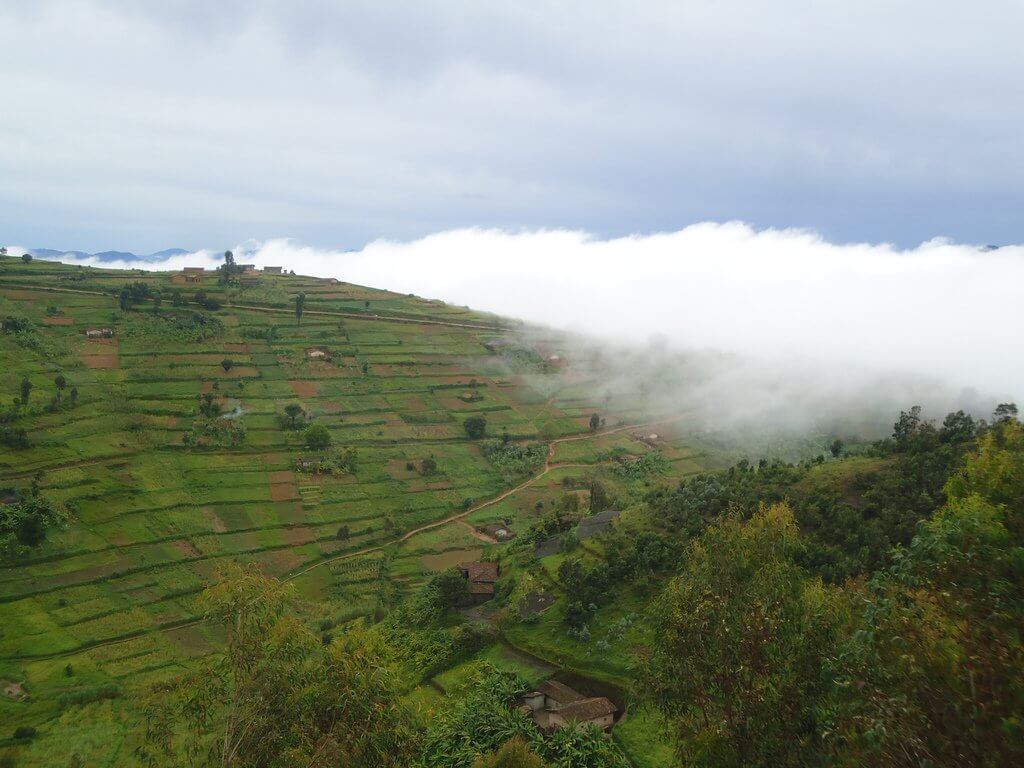
Walking uphill from the lake I feel anything but a useful explorer. I feel like an eejit, wearing a wide-brimmed hat to protect my northern complexion from the sun. Carrying my heavy pack on my back also sets me apart; everyone else here has the good sense to carry weight on their head, not hang it awkwardly from their shoulders and I look like some sort of awkward tortoise with my rucksack. My white skin, my most salient feature, seems like a bright beacon as I walk through mud hut villages.
Attracting attention
Rwanda has a population density similar to Holland’s – around hundred people per square kilometre – which makes it feel weird as practically everyone lives in the countryside. This means I don’t get a moment’s space as I travel. Each time I stopped to rest or to, ahem, answer the call of nature, people appear out of nowhere shouting “Muzungu! Muzungu!” This is at times quite frustrating.
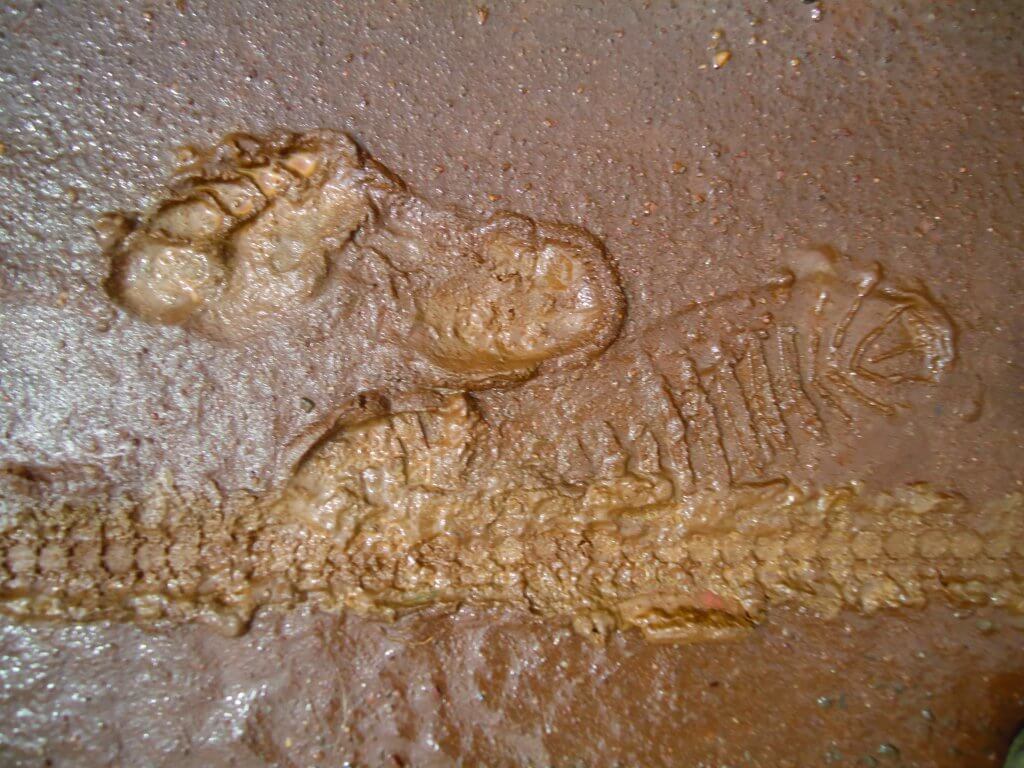
There are few cars on the roads; most of the traffic is pedalling or pedestrian. Kids walking several miles to school, men pushing heavy black bicycles laden with green bananas or deftly carrying heavy loads on their crowns, women bringing produce to market. An impatient European, I walked slightly faster than the average Rwandan ambler so inevitably I’d slowly overtake kids and they’d excitedly break into a canter to keep up with me.
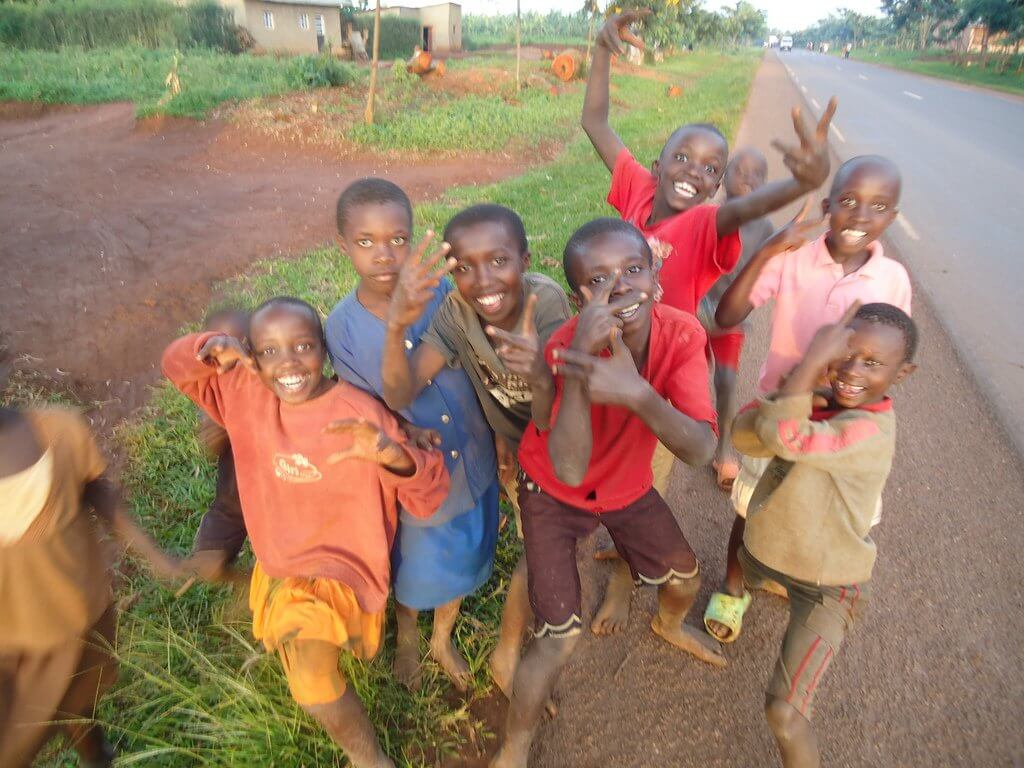
At times I feel like the Pied Piper with 20 kids following me trying out their broken English; “How are you, I am fine.” “What is my name.” “Give me my money.” Half of Rwanda’s population is under 15 so there are kids everywhere. In a country the size of Munster that’s four million kids. So many, that schools work in shifts, one group in the morning and one in the evening.
Rwandan potatoes, which are known locally as Irish potatoes for some reason, are probably the best in the world. I’m not sure if it’s the clement climate or the volcanic soil but they put our Kerr’s Pinks to shame.
I had originally planned to wild camp, to wait until darkness fell and then pitch my tent stealthily, breaking camp at first light before anyone noticed. This has worked for me practically everywhere I’ve been from Germany to Iran to Turkmenistan. Unfortunately, this strategy isn’t quite so effective in densely populated Rwanda. So most nights I begged refuge from parish priests. As a long-lapsed Catholic, I embarrassed myself with bungled attempts at grace before ample meals of goat brochettes or rabbit stew washed down with big bottles of ice-cold Primus beer. Rwandan potatoes, which are known locally as Irish potatoes for some reason, are probably the best in the world. I’m not sure if it’s the clement climate or the volcanic soil but they put our Kerr’s Pinks to shame.
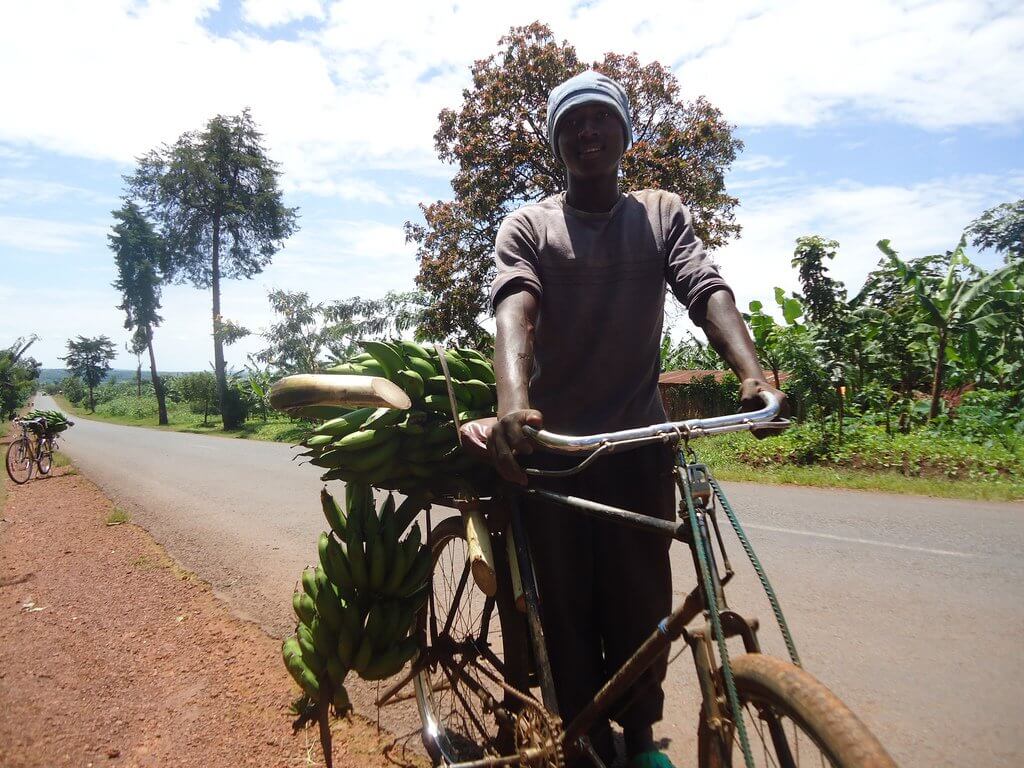
Halfway
It takes me a week to reach Kigali, the capital, and the halfway point on my journey. After seven days and nights spent in small un-electrified villages, Kigali’s bright lights and frenetic pace is jarring. I wander around its only supermarket slightly dazzled for half an hour. I’m enchanted by the abundant rows of food and consumer goods, and rotund self-satisfied loafer-wearing NGO workers. Eventually, I buy a bar of Cadbury’s fruit and nut at a wildly inflated price and hitting the road again.
My own calves were thankful for the gentler gradients and duly my daily distances increase. Though, I have to remind myself that the purpose was of my walk is not to push out big distances, it is to go slow to observe and experience.
Kigali is the halfway point of my journey and seems to be the fault line for Rwanda’s geography too. After Kigali the landscape also changes remarkably. The temperature rises and the land rolls more gently as the road points east. As the ground underfoot dries out, I slowly see a continent morph from the verdant jungle of central Africa to the red dust savannah of eastern Africa. Large fields and cows began to appear. On one occasion I feel an odd kinship with a herd of black and white Friesen heifers. I have to stop myself from hopping into the field and saying hello – as they probably didn’t speak any English. My own calves were thankful for the gentler gradients and duly my daily distances increase. Though, I have to remind myself that the purpose was of my walk is not to push out big distances, it is to go slow to observe and experience.
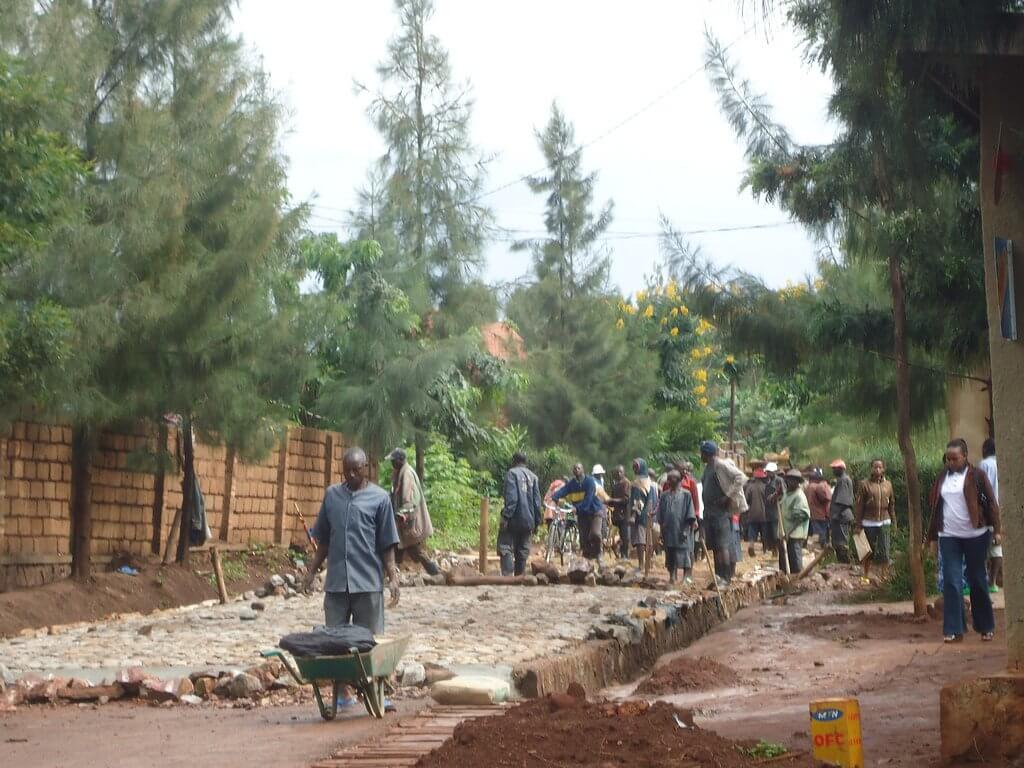
Akagera National Park
The final day of my journey begins with a chilly dawn and a beguiling pink-trimmed sunrise. To get to my destination, Lake Nasho which borders Tanzania, I have to walk the final 20km or so through Akagera National Park, home to big game: zebra, giraffe, hippo and buffalo. Fortunately for me the lions fled to Tanzania in 1994. I enter the park with my heart in my mouth and a large stone in both hands. A few miles into the park I throw my stones at a group of baboons sitting defiantly in the middle of the road, hoping they can’t smell the sweet bread roll in my pocket. A few of the males are the last to get out of my path; they look in my direction yawning with an impressive display of fangs. I try not to be scared.
After my encounter with the baboons, I break into a run. I’m scared. I mull over what I should do if I come across a herd of buffalo. Throw stones, run, stand still and make myself tall?
I feel exposed and vulnerable. I’m walking through a place where people are advised not to leave their vehicle. I tell myself that this is just to discourage hapless German tourists from petting the wild animals. After my encounter with the baboons, I break into a run. I’m scared. I mull over what I should do if I come across a herd of buffalo. Throw stones, run, stand still and make myself tall? I round a corner and I see a buffalo’s rump disappear into the acacia scrub on the fringe of the road; fresh dollops of smelly dung on my path are a reminder of the near miss.
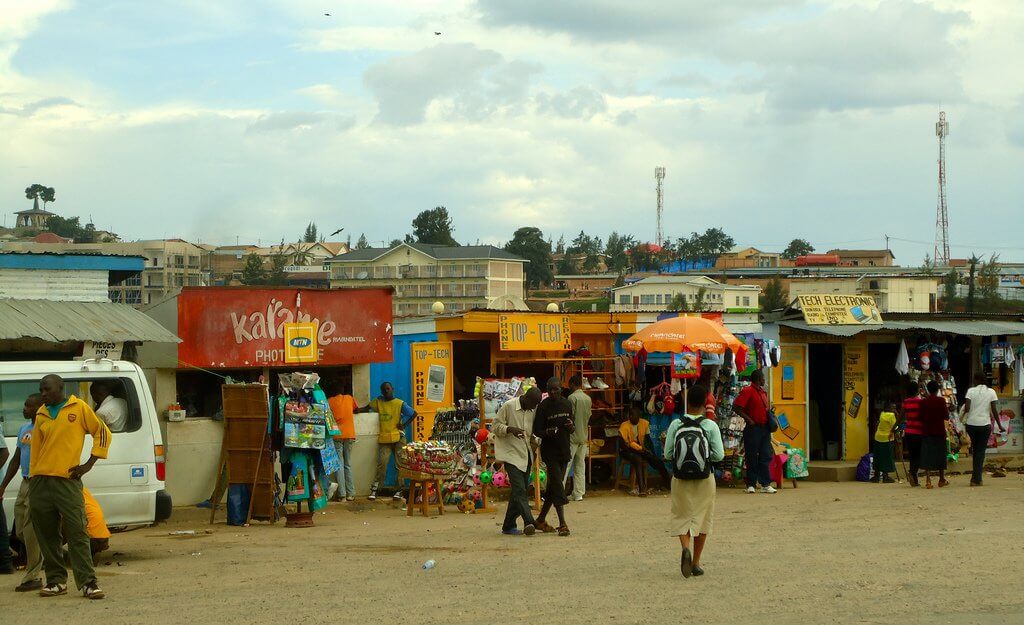
Adrenaline is a powerful stimulant, and to my surprise I find sturdy legs to run the final 10km to the rangers’ lodge where I’m chastised for walking alone through the park. The buffalo, they tell me, are not friendly. We sit and chat and they soften and offer smokes – Pall Mall Blue – and I refrain. To my relief, they refuse to let me walk the last couple of kilometres to the lake and offer a lift.
As the grey clouds of a thunderstorm close in, I crest a hill and there it is below me, the goal of my quest, a hippo- and croc-filled lake. On the other bank is Tanzania. I celebrate walking alone for 220km across a fascinating country wearing a silly wide-brimmed hat. My reward? A sweaty bread roll from my pocket and a long slug of warm water.
Staying safe and sound in Rwanda
Despite its turbulent past, Rwanda is generally a safe place to travel. Although walking around an unfamiliar place – especially one where a school teacher earns $40 a month – with $300 in your pocket and $1,000 worth of camera equipment in your backpack is not without its dangers. But, I’d argue that the dangers in these place are the same as those we’d encounter on a city break to Paris of New York.
15 Things We Can’t Live Without on Our Travels
If anything places where tourists frequent are more dangerous as they also draw criminals who prey on tourists. It’s important to bear in mind that the perception and reality of safety are not always the same. Places may seem scary from a distance, and unfamiliarity is often unsettling up close, but this doesn’t mean that those places are dangerous per se.
However, with that in mind, I took precautions. I made sure I finished my day’s walking before dark and that I slept in a secure compound each night – usually a parish house. I wore old clothes, left my watch at home and dug out my old Nokia 5110.
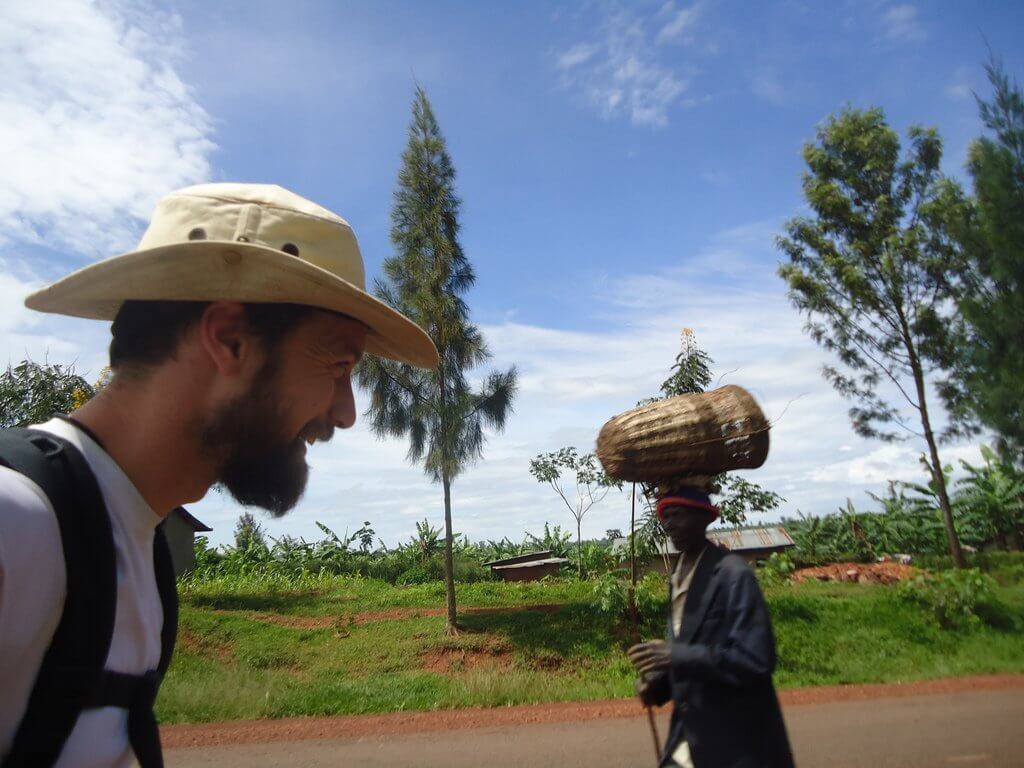
My close encounter
On one occasion I did meet a group of young men dressed in dirty rags lounging by the roadside. As I rounded the corner they intercepted me excitedly. I bumped fists with their leader and continued walking. He animatedly put his arm around my shoulder and walked alongside. The rest of the group followed, some tugging at my pack mockingly.
I couldn’t run away and had nowhere to hide. And there was no question of who would win in a fight.
I felt the leader’s elbow through the foam of my shoulder strap and his taught sinewy forearm resting against my ear; his gait was solid and firm. I could smell his aroma – a pungent mix of cassava leaf and stale sweat. He was confident and cocksure and spoke at me in the local dialect Kinyarwanda in a loud and aggressive manner.
I felt the sickness of unease, the ungrounded-ness of relative powerlessness. I had few options but to stay friendly and deferential, while retaining an appearance of calm. I hoped they’d lose interest in me. I couldn’t run away and had nowhere to hide. And there was no question of who would win in a fight. Eventual, y they tired of me and waved me off with a big grin.
Check out our Hard as Nails podcast:
If you liked this article, why not also take a look at this:



